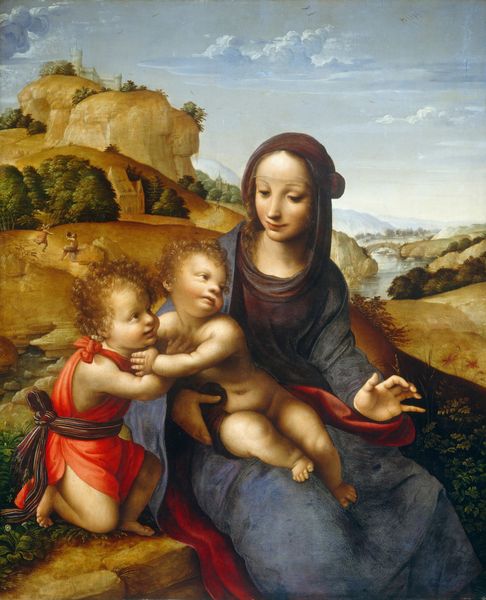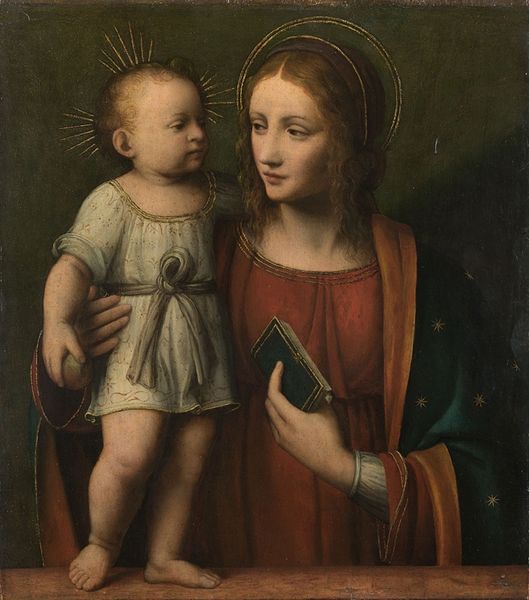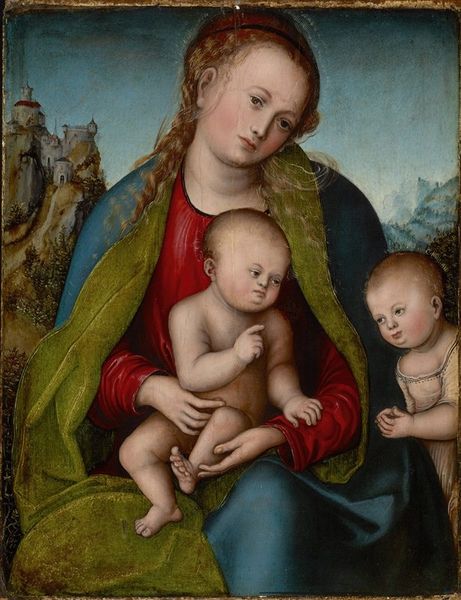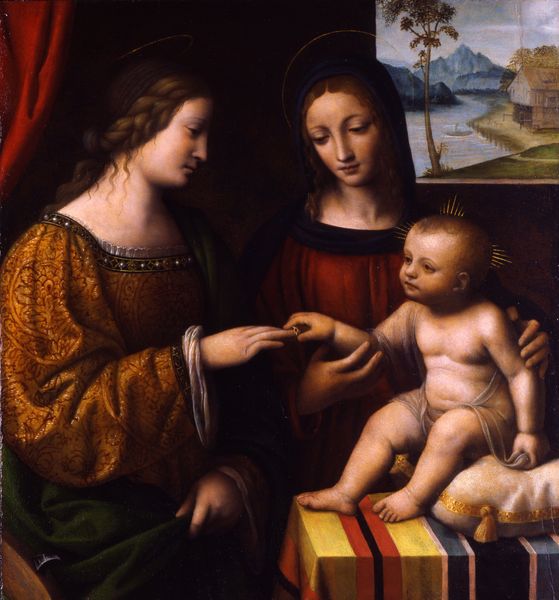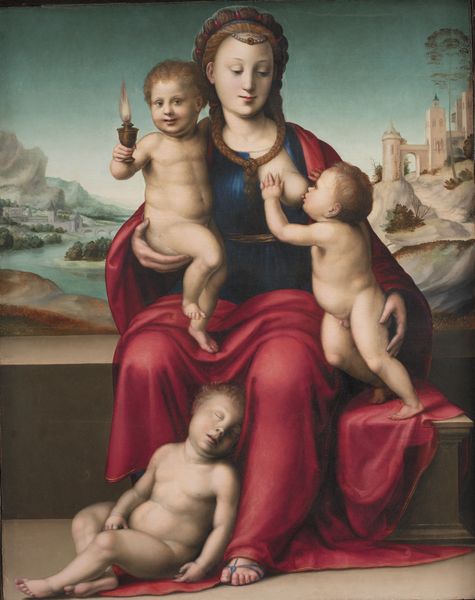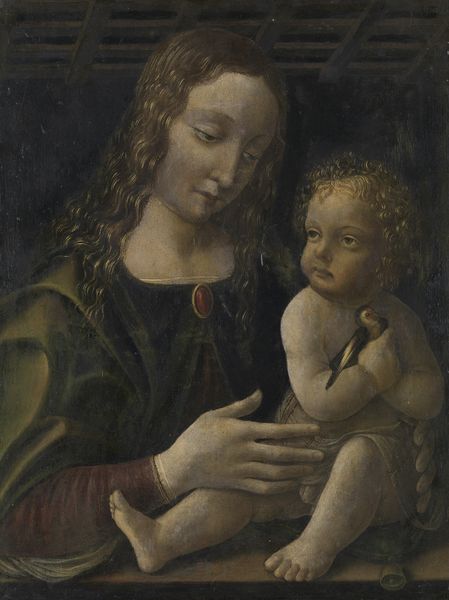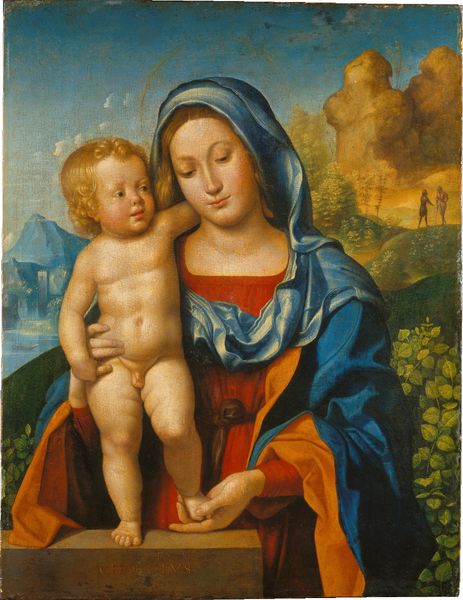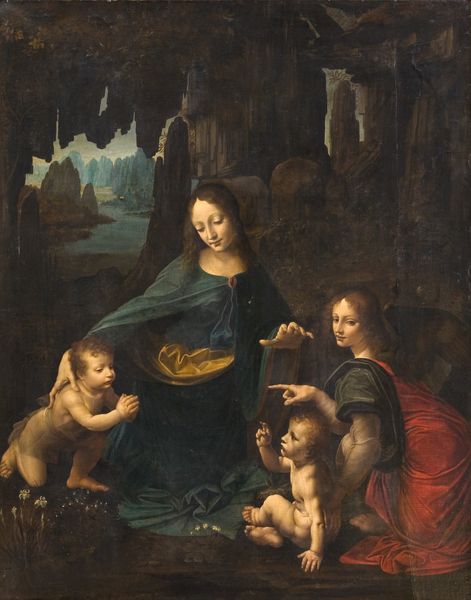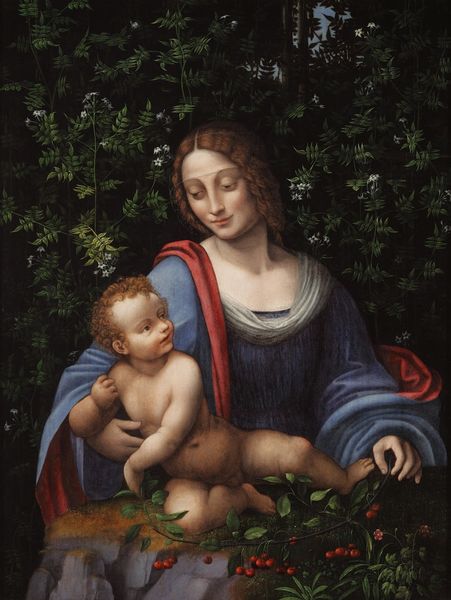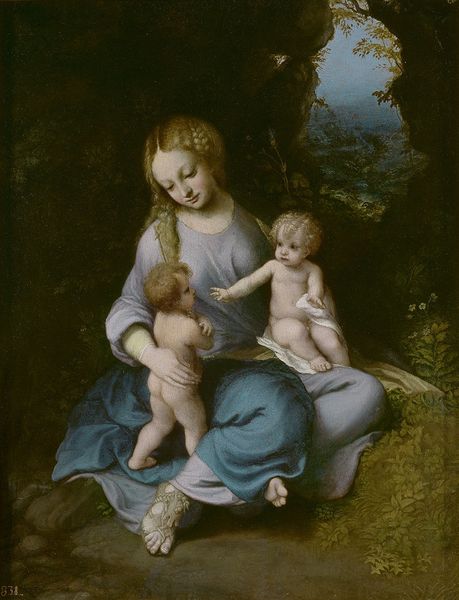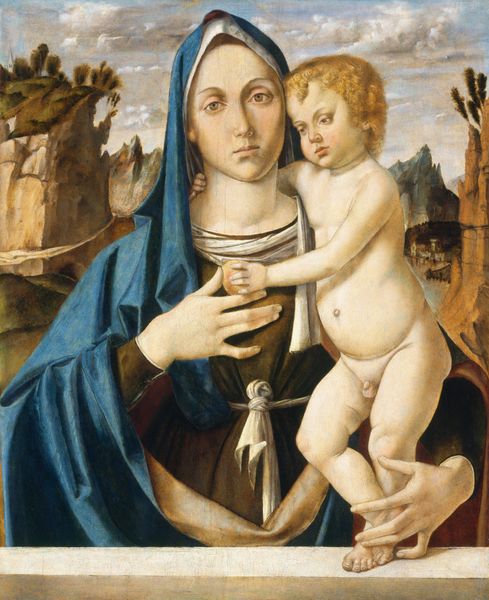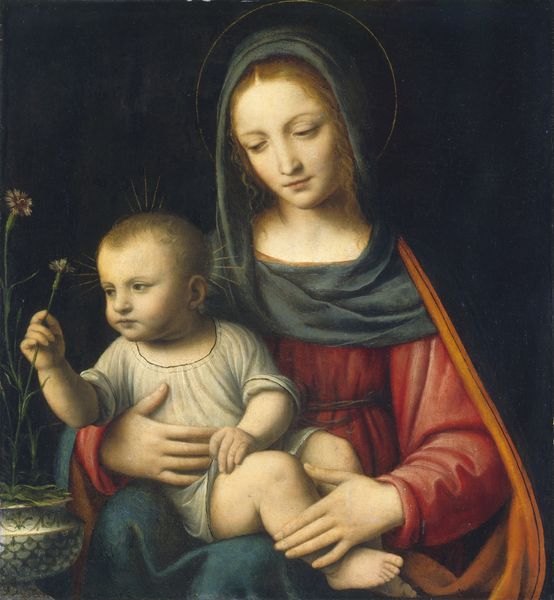
oil-paint
#
portrait
#
high-renaissance
#
oil-paint
#
figuration
#
group-portraits
#
history-painting
#
italian-renaissance
Dimensions: 88.3 x 66 cm
Copyright: Public domain
Curator: Looking at Bernardino Luini's "The Virgin and Child with Saint John," painted around 1510, what first strikes you? Editor: A tender stillness. The palette, though muted, radiates an inner warmth—a sort of pre-Raphaelite glow about it all, centuries before that movement took hold, of course. Curator: I can see that. There’s something so gently melancholic about the Virgin's expression, even with those chubby cherubs clamoring around her. Luini's brush really conveys intimacy. Consider how the figures interact—Jesus reaches for John, linking their fates. The placement of their hands signals promise. Editor: The hand gestures absolutely—the tender clasp, the offered touch. We are visually reminded about connection and legacy; perhaps, of comfort and humanity for future generations, particularly through shared human interactions, no matter how innocent. Does it feel to you that this image pulls threads from historical, artistic and psychological archetypes to carry weight across time? Curator: Undoubtedly! John's furry skins, though simple, denote the iconography of repentance. Also, think of the landscape! Notice how light and shadow carve a stage, making them present for viewers through that rocky space in time. This is a carefully designed narrative—a sacred event for us all. The colours are significant in this work, red signalling sacrifice for Christ in tandem with that darker almost sinister background. What message might that hold, I wonder. Editor: That interplay of light and dark echoes psychological thresholds, you see! These symbolic gestures—the garments, the landscape, those gentle faces—all speak to a complex, multilayered narrative steeped in hope, faith, and of course, inherent tragedy. I love to consider that while viewing; what it reveals through cultural memory. Curator: Right! Perhaps in painting these figures so humanely, Luini lets us glimpse the divine through the ordinary—which is where, arguably, it always resides anyway. Editor: Precisely. After all, we bring our experiences, humanity and history to how we perceive these things, even unintentionally, creating layers within our interpretation and interaction with artworks. So many interesting ideas emerge viewing a piece that carries so many stories, like this one!
Comments
No comments
Be the first to comment and join the conversation on the ultimate creative platform.
